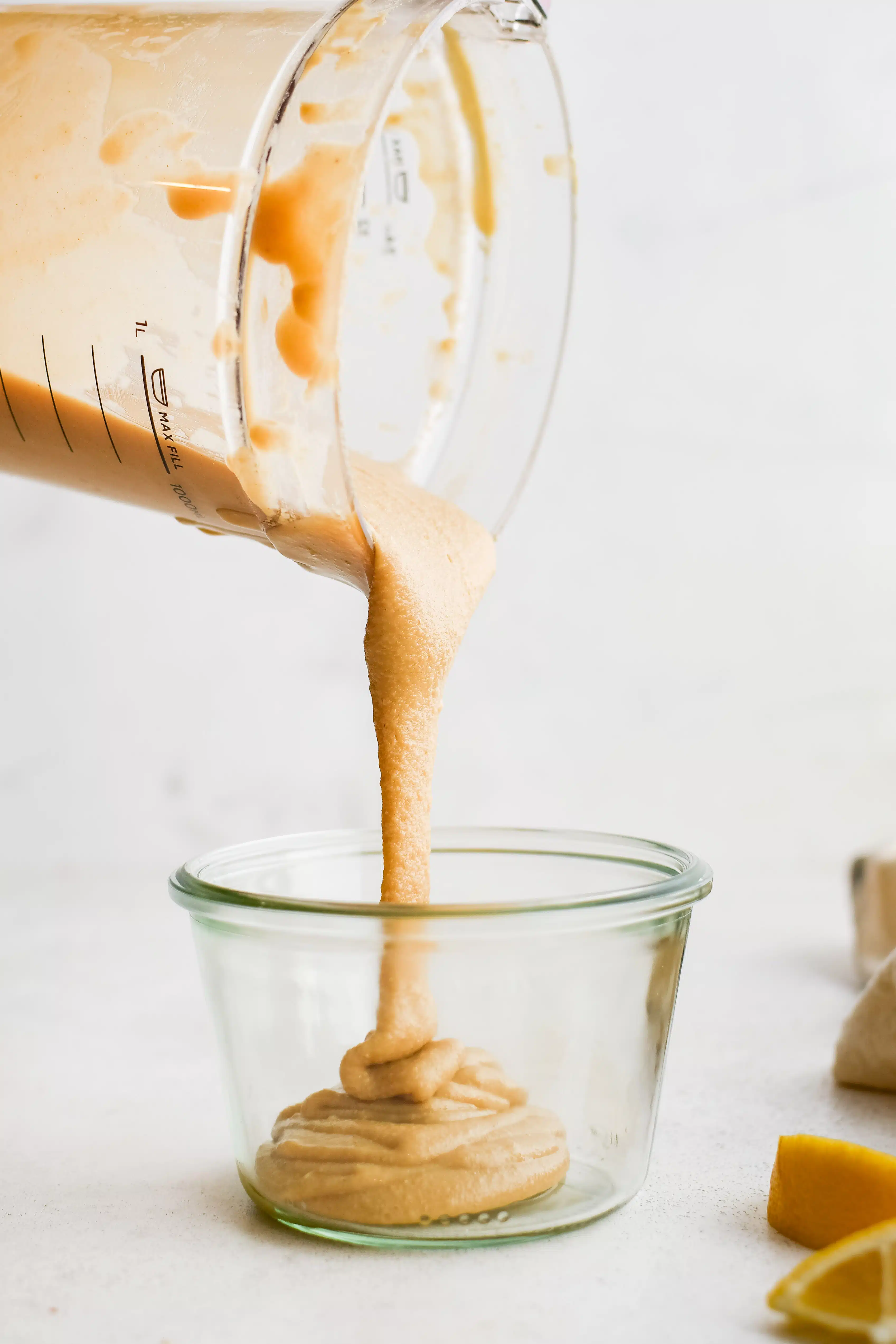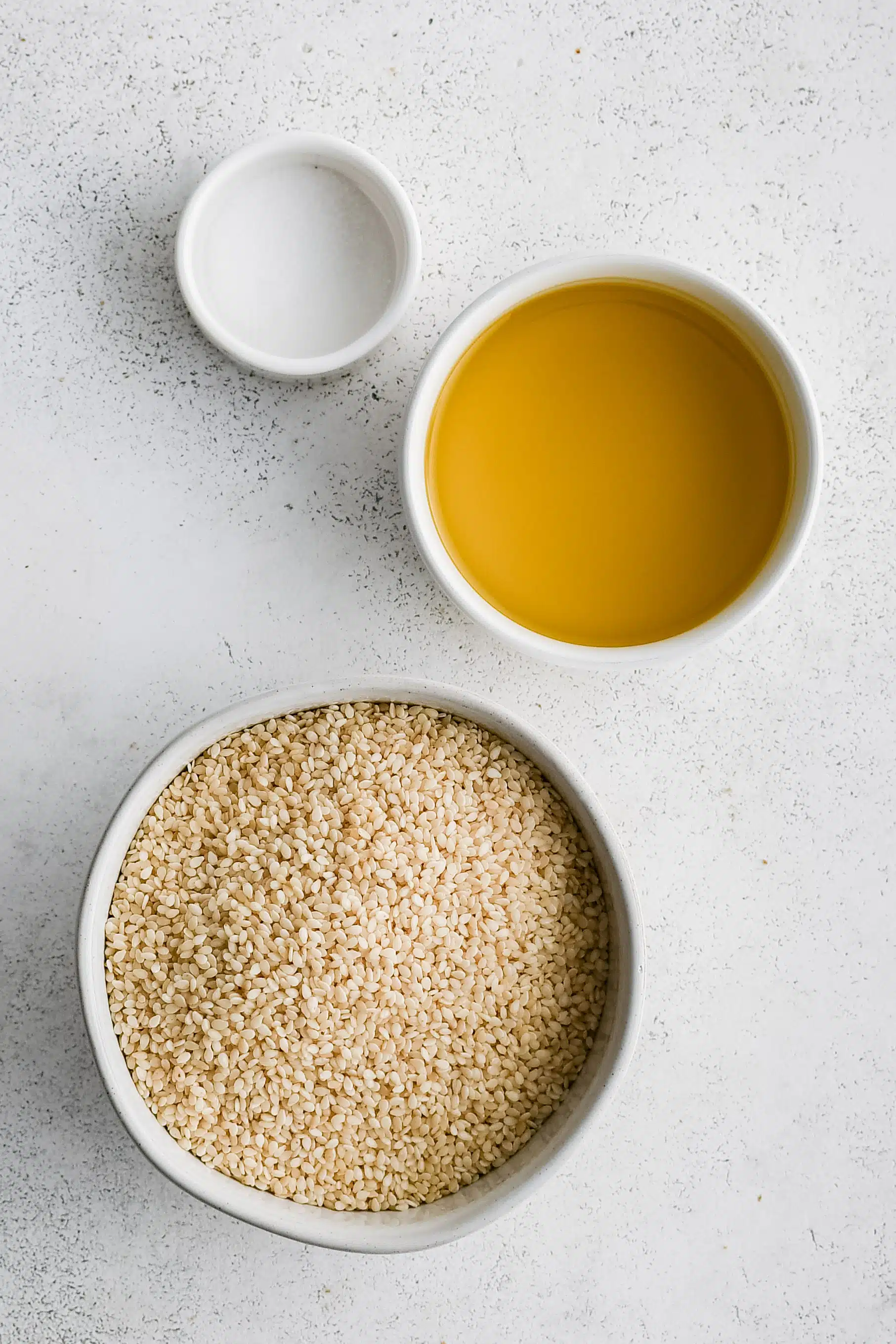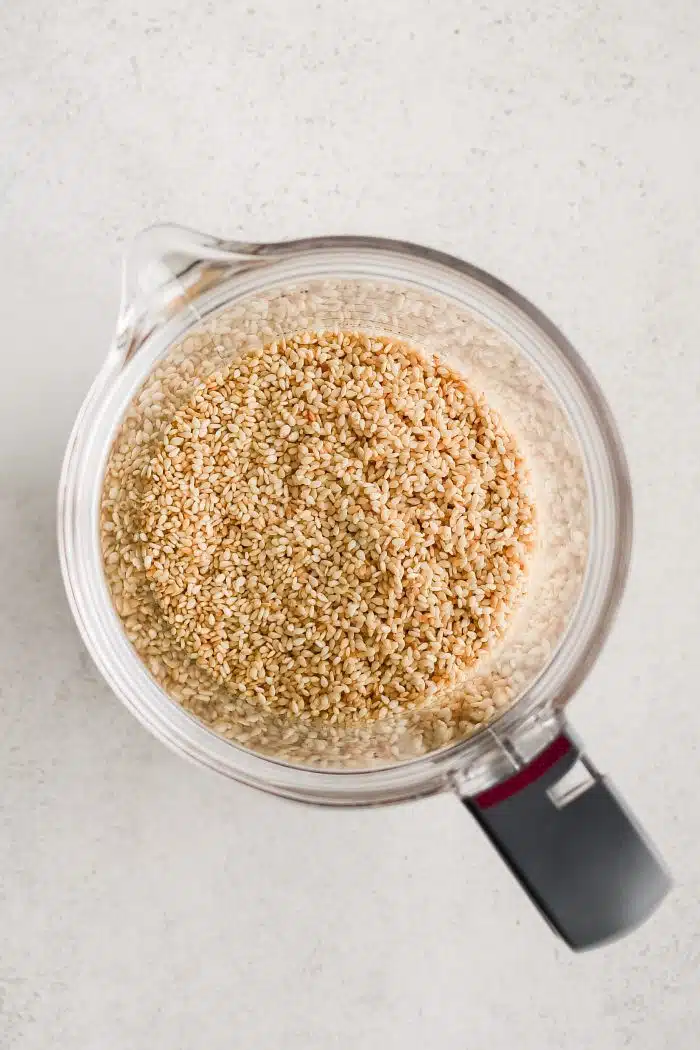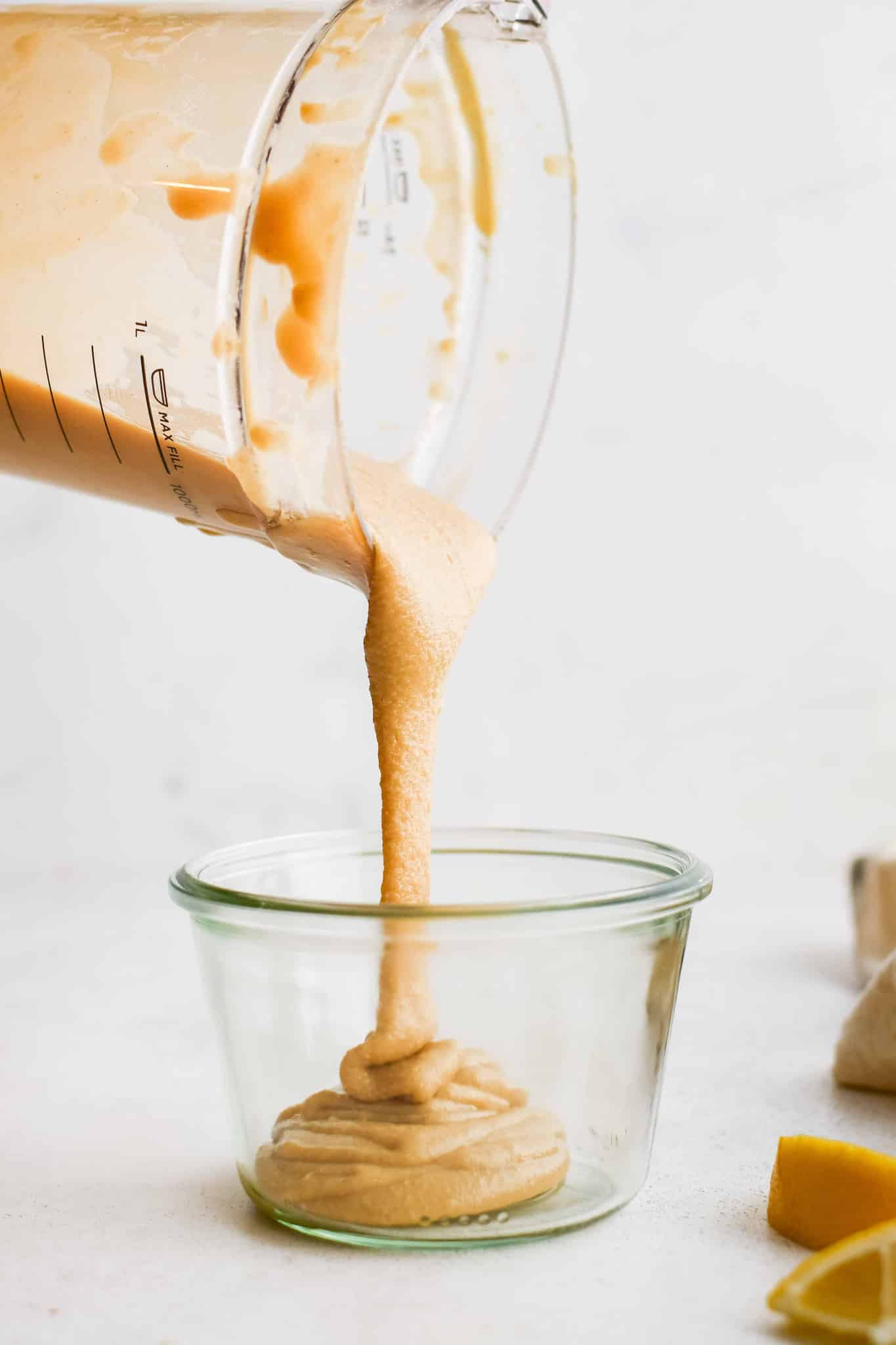This post may contain affiliate links. Please read our disclosure policy.
Ditch store-bought Tahini and make your own creamy tahini paste from the comfort of your kitchen with just 3 ingredients and 10 minutes! Use as the foundation for sauces, dressings, and dips including hummus, baba ghanoush, and tahini sauce.

Easy Tahini Paste
Once you’ve tried making your own tahini paste, you’ll never go back to store-bought tahini again! All you need is three ingredients and 10 minutes of your time to make this easily adaptable paste that can be further flavored with additional ingredients such as garlic, fresh herbs, lemon juice, honey, cumin, pepper, or Greek yogurt.
Homemade tahini is a must-have flavor-promoting component in an array of dishes. Enjoy as a simple condiment to spruce up roasted vegetables and salads, or use it to make flavorful Mediterranean dishes, such as Baba Ganoush or this classic hummus recipe.
Key Ingredients and Substitutions
- Sesame seeds – You can make tahini from hulled or unhulled sesame seeds. The hulled seeds are lighter in color and result in a smoother paste while unhulled sesame seeds add more of a bitter taste with a less smooth finish. Black sesame seeds are another option if you want a black tahini paste!
- Olive oil – A neutral-flavored oil is best for creating a smooth tahini paste without adding any overpowering flavors. I’ve used light olive oil, but you could also try avocado oil, vegetable oil, grapeseed oil, or sesame oil (untoasted).
- Salt – Some recipes for homemade tahini paste make salt an optional ingredient. I prefer to add it as it really elevates the tahini’s flavor.

How to Make Tahini
1. Toast the Seeds: Transfer the sesame seeds to a large skillet and toast them over low heat for 3-4 minutes while stirring continuously to prevent burning. They should be fragrant and a light golden color. Remove the pan from the heat and continue to stir. The heat from the pan will continue to toast the seeds as the pan cools.


2. Blend into Clumps: Add the toasted seeds to a blender and blend until they start to clump together.
3. Add Oil and Salt: Once the seeds have broken down, slowly add the olive oil and salt to the blender and blend until the consistency resembles a smooth paste. Make sure to scrape the sides of the blender halfway through to incorporate any unblended bits.
4. Serve or Store: Serve your homemade tahini sauce immediately or store it for later use.



Recipe Tips
- Avoid Overtoasting – This recipe lightly toasts the sesame seeds to increase flavor without adding too much bitterness to the sauce. The longer you toast the sesame seeds, the more bitter and intense the flavor will become.
- Blender or Food Processor – I’ve used a blender for making this tahini sauce, but you could use a food processor instead if you prefer. When using a blender, don’t forget to scrape the sides of the blender as well as the bottom to incorporate any stuck bits.
- Salt to Taste – Once the tahini paste is made, taste it to determine whether you’d like to add extra salt.
- Have Fun with Flavors – This simple tahini is a great base that you can develop further with the addition of other ingredients and seasonings, such as garlic, chopped fresh herbs, lemon juice, pesto, pepper, honey (or maple syrup), and Greek yogurt.
Homemade Tahini Sauce: FAQ
While tahini is made from blended sesame seeds (untoasted or lightly toasted), it also consists of added oil and salt. It’s lighter in color and has a more mild flavor, often described as slightly bitter and nutty. Sesame paste, on the other hand, often refers to heavily toasted sesame seeds that are then ground into a paste. It is darker in color, is more bitter in taste, and has a much more intense flavor profile.
Tahini has a slightly bitter and nutty flavor. Some refer to the flavor as being earthy. While it may resemble something like peanut butter, it doesn’t have any sweet notes. Tahini will take on a stronger flavor if the sesame seeds have been dry-cooked in a pan beyond a light toasting.
Honey or maple syrup can be added to tahini to help cut through any unwanted bitterness. More light olive oil can also be added to the tahini to reduce any sharpness in the flavor. While adapting the flavor of your tahini, keep in mind that these additional ingredients can change the consistency of the sauce.
This depends on personal preference. Unhulled sesame seeds can still be used in recipes that call for hulled seeds although they will make the tahini sauce more bitter. If you prefer a more mild flavor in your tahini sauce, I recommend buying hulled sesame seeds.

How to Use Tahini
Tahini is such a versatile ingredient. It can be used to make tahini sauce that can be drizzled over roasted vegetables like Roasted Brussels Sprouts and Sweet Potatoes, turned into a pesto salad dressing, or used as an ingredient to make creamy hummus and Baba Ganoush!
This homemade tahini can also be enjoyed alongside freshly sliced raw veggies, spread over toast, mixed into coleslaw, added to burgers and wraps, or served with falafels.
Storage
Store tahini in an airtight container or jar in the fridge and will last for up to one month. Always give your stored tahini sauce a good shake or stir before serving as a way to incorporate any separated oil during storage. Note – Tahini will naturally thicken when stored in the fridge. Whisk in cold water to thin it out if needed.
Can I Freeze Homemade Tahini?
Absolutely! Tahini sauce can be stored in the freezer for up to 3-4 months. Thaw it overnight in the fridge and give it a good stir before use to reincorporate any separated oil.
More Sauce Recipes
- How to Make Hollandaise Sauce
- Nashville Hot Sauce
- Best Alfredo Sauce Recipe
- Tzatziki Sauce
- Homemade Pesto Sauce
- Mayonnaise Recipe
- Gyoza Dipping Sauce
If you try making this Tahini Recipe, please leave me a comment and let me know! I always love to hear your thoughts.


Tahini Recipe
Ingredients
- 2 cups sesame seeds
- 3 tablespoon oil, light olive oil, avocado oil, sunflower oil
- ¼ teaspoon salt, plus more to taste
Instructions
- Toast the sesame seeds in a large skillet set over low heat while continually stirring to prevent burning.
- Toast for 3-4 minutes or until fragrant and lightly golden in color, then remove the pan from the heat. Continue stirring as the heat from the pan will continue to cook the seeds until the pan is cool.
- Pour them into a blender and blend until they start to break down and clump together.
- Add in the olive oil and salt and blend again until smooth, scraping the sides down halfway through.
- Once smooth and combined, serve or store in an airtight container in the fridge for up to 1 month.
Nutrition
Nutrition information is automatically calculated, so should only be used as an approximation.














